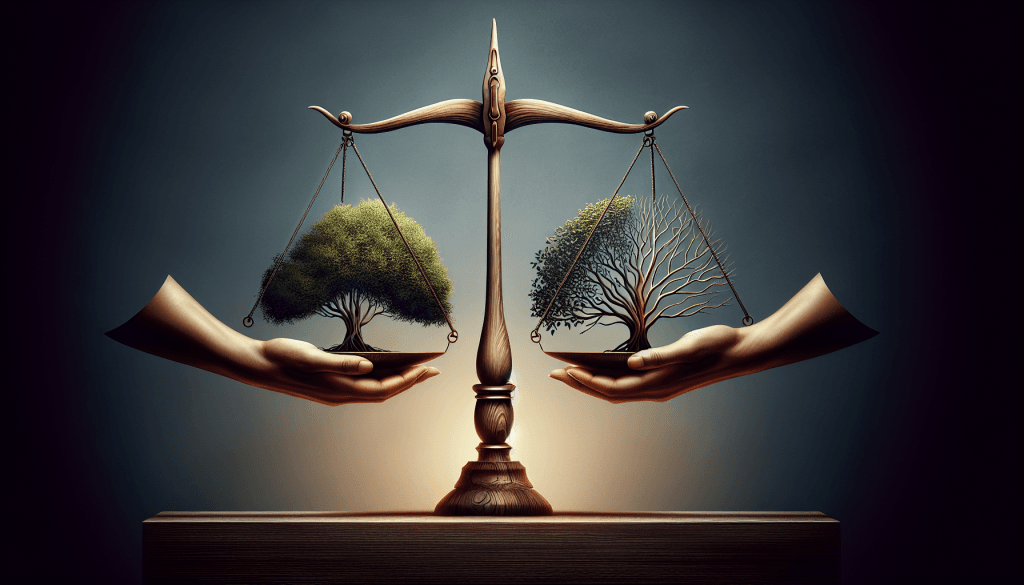Creating a balanced relationship dynamic is like learning to dance with a partner—you need rhythm, communication, and a shared understanding of each other’s moves. It’s about ensuring both people feel valued, respected, and heard. Without balance, relationships can feel like a seesaw stuck on one side, leaving someone feeling drained or overlooked.
If you’ve ever wondered why some relationships thrive while others crumble under the weight of misunderstandings, this guide is for you. Let’s explore how to build a partnership that feels like a true team effort.
Key Takeaways
- Relationship dynamics are shaped by power, communication, and emotional connection.
- Imbalances often stem from insecurities, societal norms, or poor communication.
- Building balance requires active listening, setting boundaries, and fostering trust.
- Emotional intelligence plays a crucial role in maintaining harmony over time.
Understanding Relationship Dynamics
What Is a Relationship Power Dynamic?
A relationship power dynamic refers to how power is distributed between two people. It’s not just about who makes decisions; it’s also about emotional influence, communication styles, and how conflicts are resolved.
Healthy dynamics involve shared power, where both partners feel equally important. Unhealthy dynamics, on the other hand, can lead to control, resentment, or emotional disconnection.
Causes of Power Dynamics in Relationships
Personal insecurities and past experiences
Sometimes, our baggage from past relationships or childhood can sneak into our current partnerships. Maybe one partner feels the need to control because they fear abandonment. Or perhaps someone avoids conflict because they’ve experienced rejection before.
Cultural or societal influences
Society often imposes roles on us. For instance, traditional gender norms might pressure one partner to be the “breadwinner” while the other handles emotional labor. These expectations can create unspoken imbalances.
Communication imbalances
If one person dominates conversations or avoids expressing their feelings, it can tip the scales. Communication is the glue that holds relationships together, and when it’s one-sided, cracks begin to form.
!

Identifying Imbalances in Your Relationship
Signs of an Unbalanced Relationship Dynamic
Unequal decision-making power
Does one partner always call the shots? Whether it’s deciding where to eat or making big life choices, unequal decision-making can leave one person feeling powerless.
Lack of mutual respect or trust
If trust is shaky or respect feels one-sided, it’s a red flag. Healthy relationships thrive on mutual admiration and belief in each other’s intentions.
How to Recognize Power Struggles
Power struggles often show up as recurring arguments or passive-aggressive behavior. Maybe one partner feels unheard, or the other feels micromanaged. Recognizing these patterns is the first step to addressing them.
!

Steps to Create a Balanced Relationship Dynamic
Improving Communication and Connection
Active listening techniques
Listening isn’t just waiting for your turn to speak. It’s about truly hearing your partner, asking questions, and showing empathy. Try paraphrasing what they say to confirm you understand.
Expressing needs and feelings clearly
Bottling up emotions is like shaking a soda can—it’s bound to explode. Be honest about your needs and feelings, but do so respectfully. For tips on expressing yourself, check out this guide on emotional regulation.
Setting Healthy Boundaries
The role of boundaries in relationship dynamics
Boundaries are like fences—they protect your emotional space while allowing connection. Without them, resentment and burnout can creep in.
How to establish and maintain boundaries
Start by identifying what makes you uncomfortable or overwhelmed. Then, communicate these boundaries calmly and consistently. For more insights, read this article on setting and maintaining boundaries.
Cultivating Trust and Respect
Building trust through consistent actions
Trust isn’t built overnight. It’s the result of small, consistent actions—like keeping promises or being there when your partner needs you.
Demonstrating mutual respect
Respect means valuing your partner’s opinions, even if you disagree. It’s about treating them as an equal, not as someone to “win” against in arguments.
!

Managing and Resolving Conflicts
The Importance of Conflict Resolution in Balance
Conflict is inevitable, but how you handle it makes all the difference. Healthy conflict resolution strengthens relationships, while unresolved issues can fester like an open wound.
Strategies for Resolving Disputes
Staying calm and focused on the issue
When emotions run high, it’s easy to veer off-topic. Take a deep breath, stay calm, and focus on solving the problem—not attacking your partner.
Finding compromises that work for both partners
Compromise is the art of meeting halfway. It’s not about one person giving in; it’s about finding solutions that respect both perspectives.
!

Strengthening Emotional Intelligence in Relationships
Understanding Emotional Intelligence and Its Role
Emotional intelligence (EQ) is your ability to understand and manage emotions—both yours and your partner’s. High EQ helps you navigate tough conversations and build deeper connections.
Developing Empathy and Self-Awareness
Recognizing your own emotions
Before you can understand your partner, you need to understand yourself. Pay attention to your triggers and emotional patterns.
Understanding your partner’s perspective
Empathy is about stepping into your partner’s shoes. Ask yourself, “How would I feel in their situation?” This simple question can transform your interactions.
Using Emotional Intelligence to Foster Balance
When both partners practice emotional intelligence, it creates a ripple effect. Communication improves, conflicts are resolved faster, and the relationship feels more balanced.
!
Maintaining a Healthy Relationship Dynamic Over Time
Regular Check-Ins and Open Communication
Think of your relationship as a garden—it needs regular care to thrive. Schedule check-ins to discuss how you’re both feeling and address any concerns.
Adapting to Changes and Growing Together
Life is full of twists and turns. Whether it’s a new job, a move, or parenthood, adapting together strengthens your bond. For more on nurturing relationships during life changes, visit this resource on self-care in relationships.
Reinforcing Positive Behaviors and Habits
Celebrate the small wins, like resolving an argument calmly or supporting each other during tough times. Positive reinforcement encourages more of the same behavior.
Creating a balanced relationship dynamic isn’t a one-time effort—it’s an ongoing process. But with open communication, mutual respect, and a dash of emotional intelligence, you can build a partnership that feels like a true team.
For more insights on fostering healthy dynamics, check out this article on building strong relationships. Remember, every step you take toward balance is a step toward a happier, healthier connection.
FAQ: Unlocking the Secrets to a Balanced Relationship Dynamic
What does a balanced relationship dynamic mean?
A balanced relationship dynamic refers to a partnership where both individuals feel valued, respected, and supported. It involves mutual effort, open communication, and shared responsibilities to ensure both partners’ needs are met equally.
Why is balance important in a relationship?
Balance is crucial because it fosters trust, reduces resentment, and allows both partners to grow individually and together. Without balance, one partner may feel overwhelmed or undervalued, leading to dissatisfaction and potential conflicts.
How can communication improve relationship balance?
Effective communication helps partners express their needs, concerns, and expectations clearly. By actively listening and validating each other’s feelings, couples can address imbalances and work collaboratively to maintain harmony.
What role does setting boundaries play in creating balance?
Setting healthy boundaries ensures that both partners respect each other’s personal space, time, and emotional needs. Boundaries prevent over-dependence and create a sense of individuality within the relationship, contributing to overall balance.
How can couples share responsibilities fairly?
Couples can share responsibilities by discussing and dividing tasks based on each partner’s strengths, preferences, and availability. Regular check-ins can help adjust the distribution if one partner feels overwhelmed or underappreciated.
What are some signs of an unbalanced relationship dynamic?
Signs include one partner consistently making sacrifices, lack of communication, feelings of resentment, or one person dominating decision-making. These imbalances can lead to frustration and emotional distance over time.
How can self-awareness contribute to a balanced relationship?
Self-awareness allows individuals to understand their own needs, emotions, and behaviors. By recognizing personal patterns, partners can take responsibility for their actions and work towards creating a more equitable dynamic.
Can external factors impact relationship balance?
Yes, external factors like work stress, family dynamics, or financial pressures can affect balance. Openly discussing these challenges and supporting each other can help mitigate their impact on the relationship.
How can couples maintain balance during conflicts?
During conflicts, it’s important to focus on resolving issues rather than assigning blame. Using ‘I’ statements, staying calm, and seeking compromise can help partners navigate disagreements while preserving balance.
What steps can couples take to continuously nurture balance?
Couples can nurture balance by regularly checking in with each other, celebrating each other’s achievements, and making time for shared activities. Prioritizing the relationship and being adaptable to changes ensures long-term harmony.



